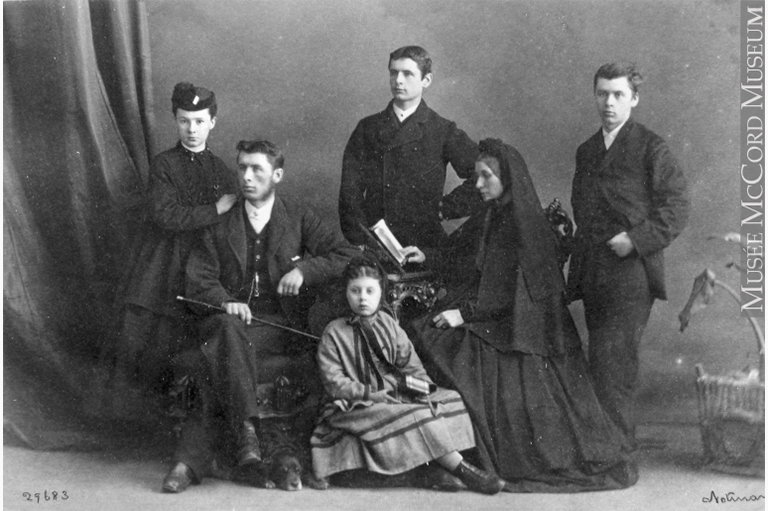Anna Topley

In 1858, Anna Topley learned the daguerreotype process from William Notman, who was working out of his Montreal home. Notman, who had arrived in Montreal from Scotland two years previously, was turning his hobby into what would become the leading photographic business in Canada. Anna taught the daguerrean process to her thirteen-year-old son, William Topley. Anna's husband, John Topley, built a shed beside their home in Aylmer, Quebec, to house their darkroom.
When John Topley died in 1863, William became an itinerant tintypist to help support the family. He then worked in Notman’s Montreal studio, where his mother had learned photography. Later, he purchased Notman’s Ottawa studio, renaming it William Topley & Son. The Topley studio was tremendously successful. By 1872, the studio had photographed 2,300 sitters and William Topley had begun developing a reputation for his photographs of political, cultural, and religious leaders. William’s son, William de Courcy Topley, took over the studio in 1907 and managed it until 1926. After it closed, William de Courcy Topley sold approximately two hundred thousand Topley photos and negatives to Library and Archives Canada (LAC), where they remain today.

With 7 uniquely curated newsletters to choose from, we have something for everyone.
The extent of Anna Topley's photographic work is unknown, although it has been documented that she photographed street views of the towns of Aylmer and Hull, Canada East (now Quebec). In 1860, Anna photographed a rustic ceremonial arch that was built in Aylmer for the Prince of Wales’ royal visit to Canada. In 1906, Anson A. Gard commented in his book Pioneers of the Upper Canada and the Humors of the Valley, South Hull and Aylmer, “The Royal family was much hurried, but it [Anna’s photograph] has for forty-six years been a source of pleasure to the good people of Aylmer.”
The photo of the arch resides in LAC’s Topley collection. Research has led to the identification of four more Anna Topley photographs in that collection, and further investigation may reveal that more of the LAC’s Topley photos were taken by Anna.



If you believe that stories of women’s history should be more widely known, help us do more.
Your donation of $10, $25, or whatever amount you like, will allow Canada’s History to share women’s stories with readers of all ages, ensuring the widest possible audience can access these stories for free.
Any amount helps, or better yet, start a monthly donation today. Your support makes all the difference. Thank you!
Themes associated with this article
Advertisement




